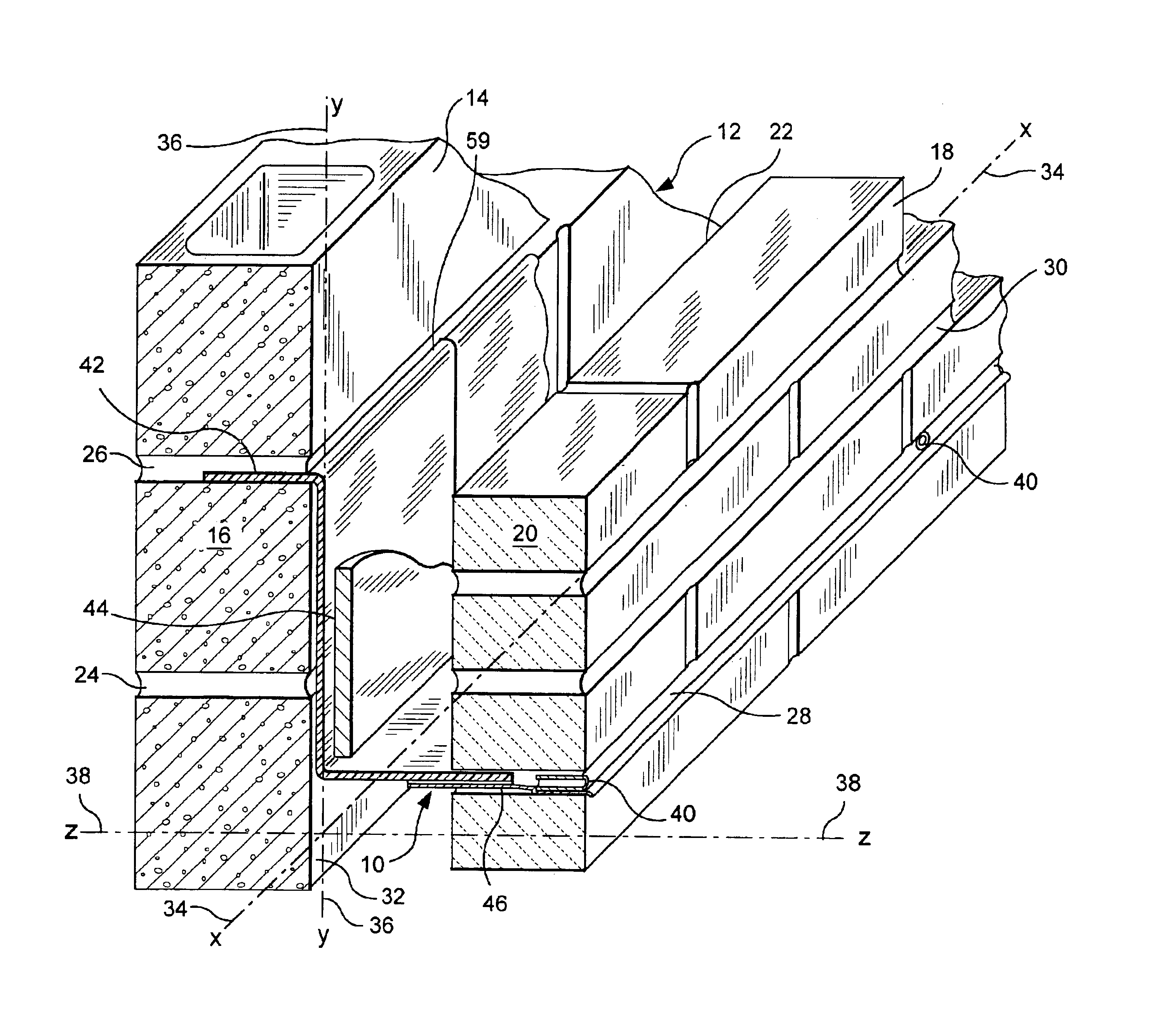Metal foil/scrim flashings
a technology of metal foil and scrim flashing, which is applied in the field of flashing systems, can solve the problems of insufficient development of pressure-sensitive hot melt adhesives needed for peel-and-stick applications, insufficient adhesive quality for rough masonry block surfaces, and insufficient filling of pressure-sensitive products, etc., and achieve the effect of enhancing tear and puncture resistan
- Summary
- Abstract
- Description
- Claims
- Application Information
AI Technical Summary
Benefits of technology
Problems solved by technology
Method used
Image
Examples
first embodiment
[0060]Referring now to FIGS. 1 through 3, this invention in which a masonry flashing system, referred to generally by the reference designator 10, is shown. In this embodiment, a cavity wall structure 12 is shown having an inner wythe 14 of masonry blocks 16 and an outer wythe 18 of facing brick 20. Between the inner wythe 14 and the outer wythe 18, a cavity 22 is formed. Successive bed joints 24 and 26 are formed between courses of blocks 16 and the joints are substantially planar and horizontally disposed. Also, successive bed joints 28 and 30 are formed between courses of bricks 20 and the joints are substantially planar and horizontally disposed. For the through-wall flashing installation of this embodiment bed joint 26 and bed joint 28 are employed.
[0061]For purposes of this discussion, the exterior surface 32 of the interior wythe 14 contains a horizontal line or x-axis 34 and an intersecting vertical line or y-axis 36. A horizontal line or z-axis 38 also passes through the co...
third embodiment
[0106]As the metal foil / scrim flashing of the third embodiment is not precoated with pressure activated adhesives, the mounting is accomplished utilizing termination bars, described in the patent applications related hereto. The joints, either butt or lap, are sealed in the field with sealing tape or standard mystics.
[0107]Because of environmental and flammability concerns with traditional solvent-based adhesives and an invested position in bitumen-containing materials, the building construction industry has been slow to adopt hot melt adhesive compositions for masonry flashing applications. Now, with the recent advances in hot melt adhesives technology incorporated into the above application advantages over solvent-based or bitumen systems are created hereby. Thus, because the metal / foil scrim membranes described above have the requisite tear and puncture resistance and the hot melt adhesives meet the fire retardancy and adhesiveness requirements, the previous barriers to use have ...
PUM
| Property | Measurement | Unit |
|---|---|---|
| temperatures | aaaaa | aaaaa |
| pressure | aaaaa | aaaaa |
| weight | aaaaa | aaaaa |
Abstract
Description
Claims
Application Information
 Login to View More
Login to View More - R&D
- Intellectual Property
- Life Sciences
- Materials
- Tech Scout
- Unparalleled Data Quality
- Higher Quality Content
- 60% Fewer Hallucinations
Browse by: Latest US Patents, China's latest patents, Technical Efficacy Thesaurus, Application Domain, Technology Topic, Popular Technical Reports.
© 2025 PatSnap. All rights reserved.Legal|Privacy policy|Modern Slavery Act Transparency Statement|Sitemap|About US| Contact US: help@patsnap.com



